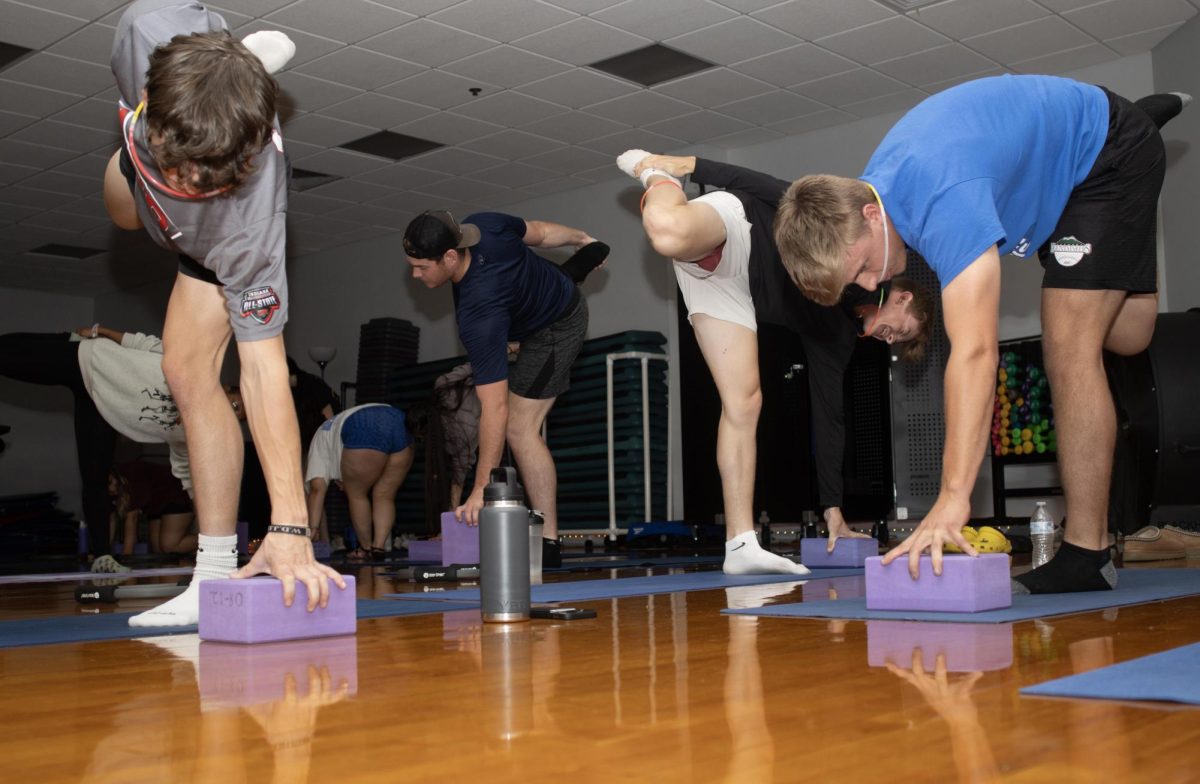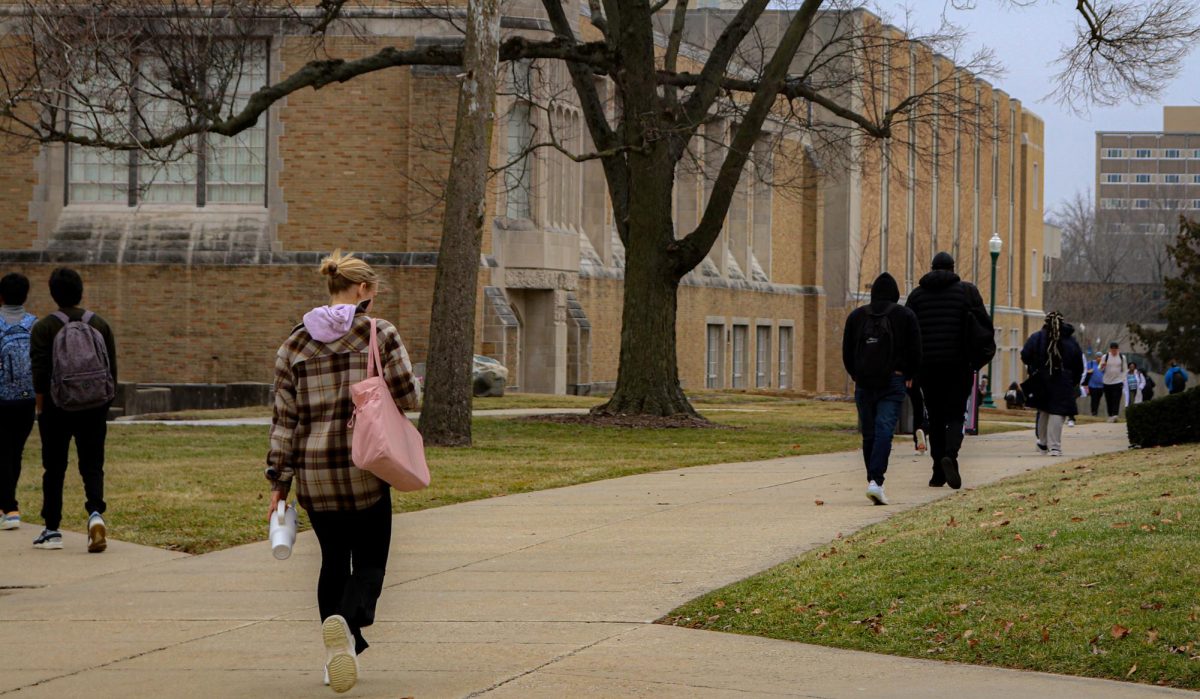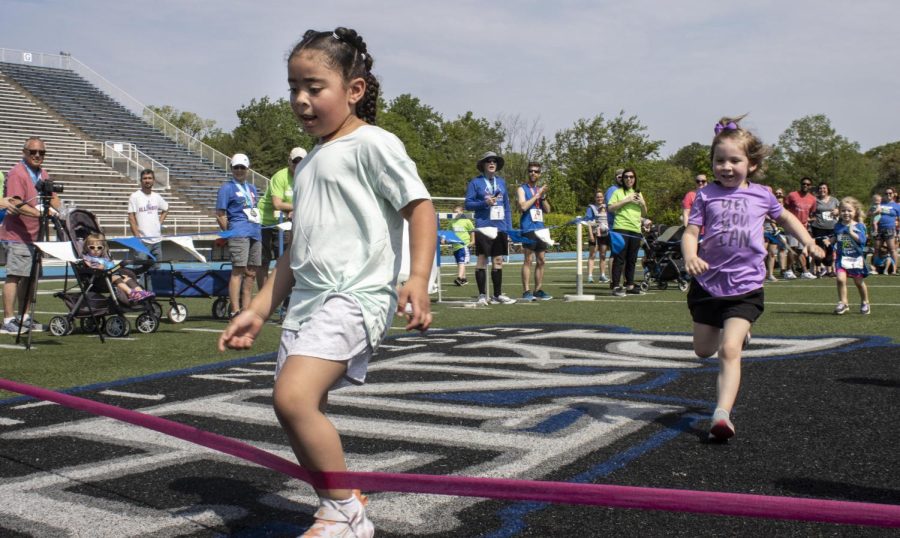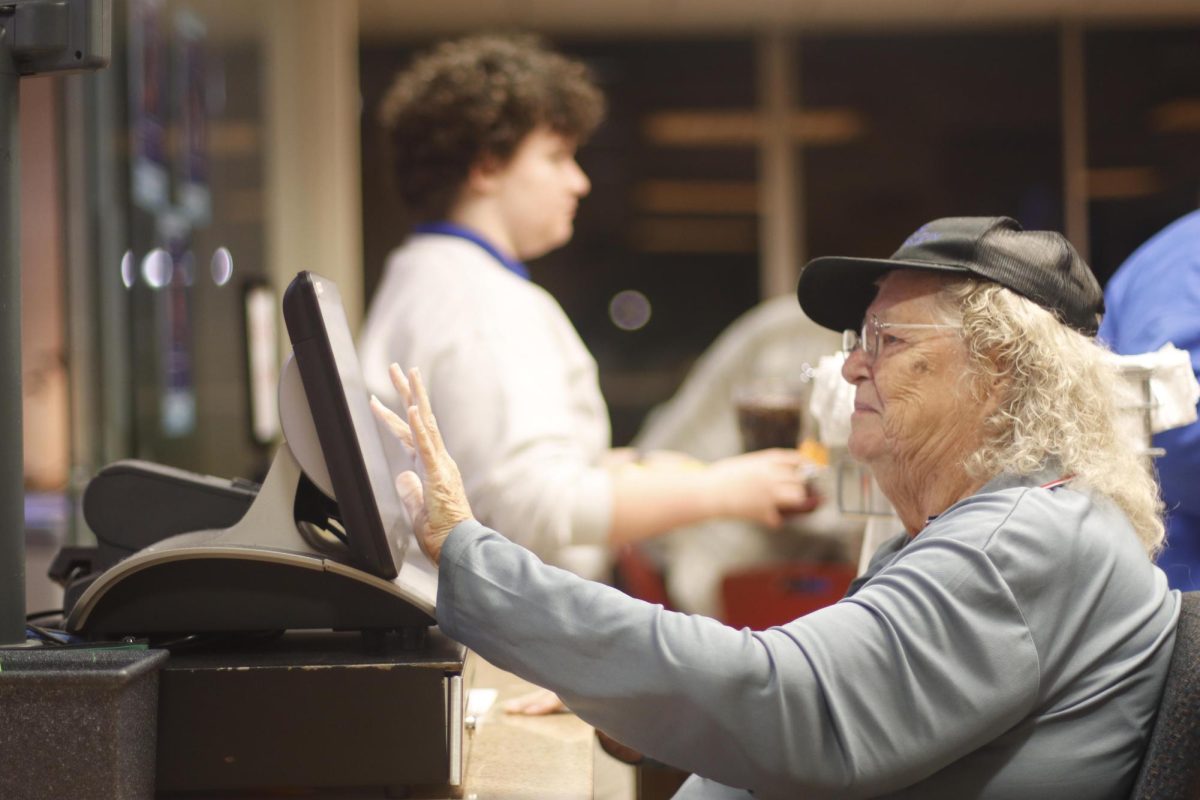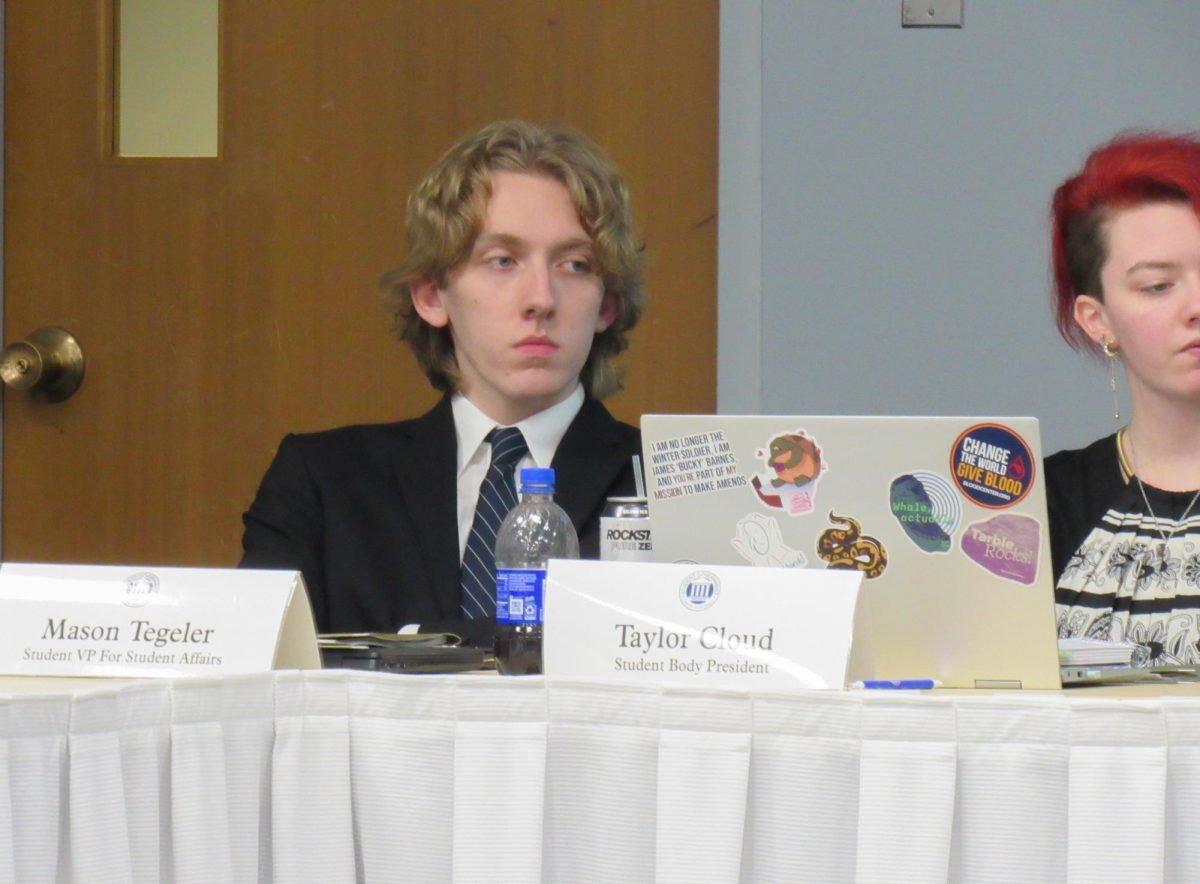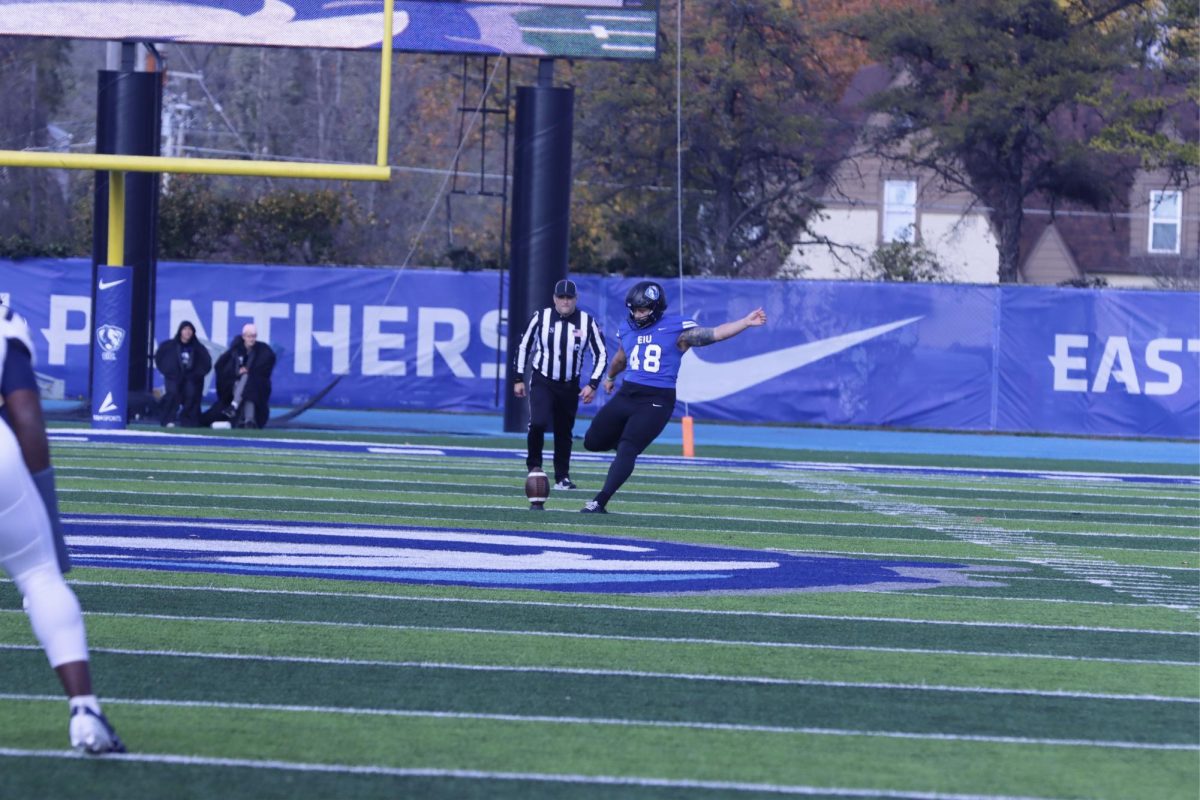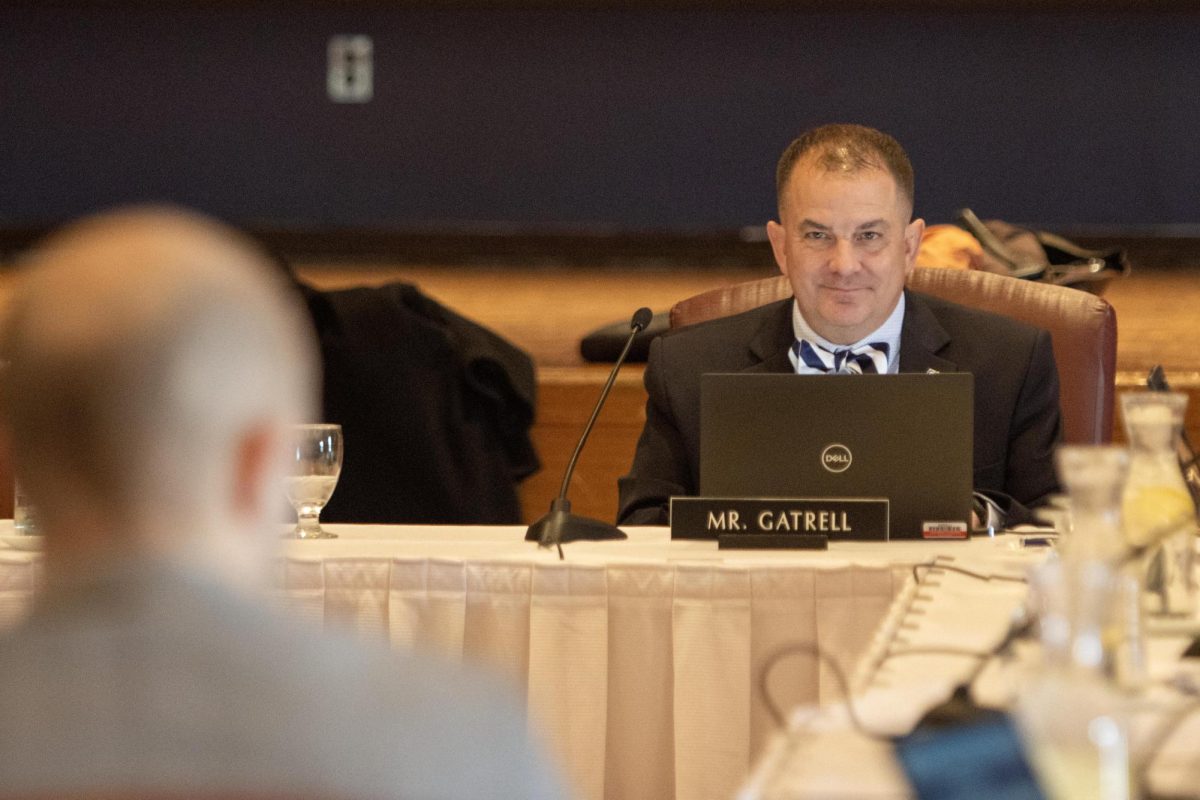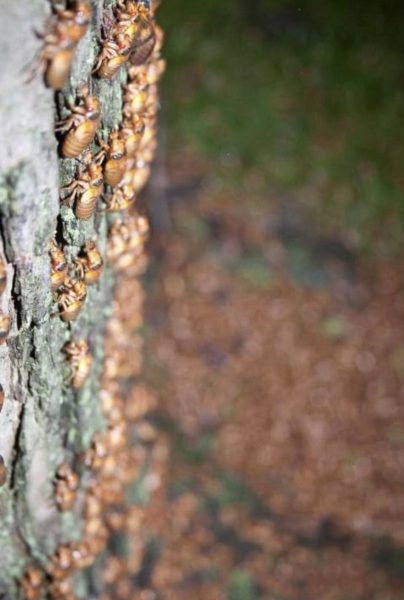
Katy Hasson has done quite a bit of driving.
She has been making a three and half hour trek from Edgington, Illinois (near Quad Cities) to Charleston for 13 years straight, at least twice every year. Hasson has been undertaking this journey to watch the annual Illinois High School State Track and Field Meet, both men’s and women’s.
The final meet in the Illinois high school track season has been hosted by Eastern since 1973. Hasson, the principal of Rockridge High School in Edgington, has been watching since 2011.
She first came to Charleston to watch her daughter compete in the 2011 state track meet. Recently, her visits to Eastern have been in a more official setting; she became a board member of IHSA in 2016. In 2020, Hasson became the President of the Board for the IHSA, making her the de facto head of Illinois high school athletics.
Naturally, Hasson is familiar with the goings on of the Illinois state track meet. What she is not familiar with was the onslaught of cicadas that hit this year’s competition.
“Never seen it like this, it’s nuts,” said Hasson. “I can’t say I’ve ever seen them down here during the time we have the meet. This must be the right time of the year; they’re talking about this brood emergence that we haven’t seen in 200-something years. I think we’re getting the worst of them.”
The brood emergence Hasson touched on was certainly centuries in the making. According to Natural Geographic reporter Ayurella Horn-Muller, this particular pairing of brood emergences (Brood XIII and Brood XIX) hasn’t happened in 221 years. For context, the last time these two broods emerged together, Thomas Jefferson was still in office.
In the same National Geographic article, Horn-Muller says that billions of cicadas have unearthed themselves this summer.
Oh boy, were the effects felt during the state track meet. Wyatt Widolff, a junior long-distance runner for Newman Central Catholic in Sterling, Illinois, shared his experience with the insect invaders.
“They weren’t a problem while we were running, but while we were warming up, yeah, they were a lot,” said Widolff, yelling over a cacophony of cicada screeches. “When we’re just walking around, they’re always landing on you and being really annoying. They’re also really loud, it’s hard just to talk.”
Widolff went on to say how the cicadas were alarming when they first arrived in Charleston, but the runners have gotten used to them.
“When you first get here in Charleston, it is noticeably different, they’re bad here,” said Widolff.
Runners are not the only ones the cicadas affect. Fans and the student athletes who help run the meet are also on the front lines in the buggy bombardment.
Kylie Hacke, a junior long-distance runner for Eastern, has been working the state meet for two years in a row. She says the cicadas are annoying, but not disruptive.
“They don’t affect much, besides the screaming and trying to run away,” said Hacke. “They’ll be on athletes has they run, but I don’t think they’ve been much of an impact, aside from spectators and fans being terrified.”
This year’s state track meet can offer a lesson to the fans in attendance 221 years from now, when the next emergence of this sort is expected to arise.
Make sure to bring some Off.
Aidan Cusack can be reached at 581-2812 or at atcusack@eiu.edu.

































































